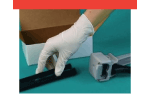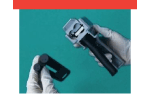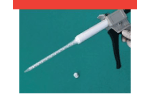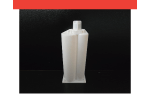Gun Applicator Video
Master Bond offers a simple to use gun applicator for dispensing two component epoxy systems. Our gun applicators ensure that accurate quantities of Parts A and B are dispensed relieving the uncertainty of complicated mix ratios. Additionally, a wide range of mixers are available to achieve the proper mix and flow rate.
Download our printable guide on how to assemble a gun applicator
How Do you Use a Gun Applicator to Apply a Two Part Epoxy?
Using a gun applicator for adhesives ensures precision mixing and improves ease of use. It allows for consistent dispensing by providing better control over adhesive flow making it a useful option for use in industrial applications.
Gun applicators can be used to apply epoxy systems with mix ratios of 1:1, 2:1, 4:1 or 10:1.
 Unbox the gun applicator
Unbox the gun applicator
Open the box and remove the plunger and handle
 Identify the Plunger
Identify the Plunger
Ensure that the plunger matches the corresponding openings of the applicator gun
 Insert the Plunger
Insert the Plunger
While holding up the lever on the back of the gun, insert the plunger through the front opening and pull tight to ensure it is fully inserted
 Load the Cartridge
Load the Cartridge
While holding up the lever on the back of the gun, insert the plunger through the front opening and pull tight to ensure it is fully inserted
Push down the closure to secure it in place
 Attach the Mixing Nozzle
Attach the Mixing Nozzle
Unscrew the cap from the adhesive cartridge
Screw on the static mixing nozzle
 Dispense a Small Amount of Adhesive
Dispense a Small Amount of Adhesive
Start by discarding a small amount of adhesive (1-2 ml)
 Apply Material
Apply Material
The applicator is ready for use - gently squeeze the trigger to apply the adhesive, ensuring an even and controlled flow
 Storage
Storage
Once finished, remove the cartridge, screw on the cap and store in an upright position
Disclaimer: Please ensure that the appropriate precautions are exercised in terms of safety, health and feasibility of the techniques included here. Please note that this guide should not to be used for any specification purposes.

